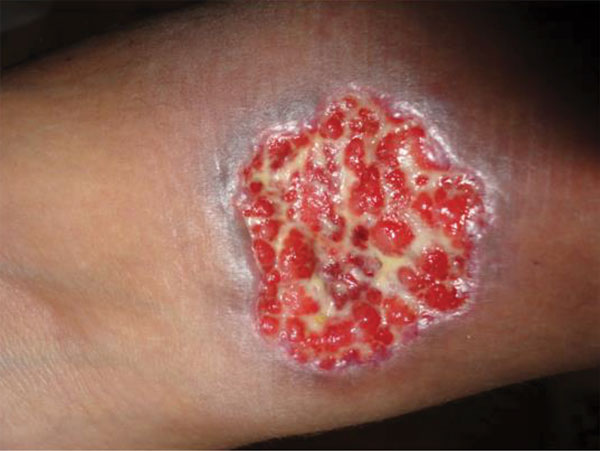Volume 23, Number 2—February 2017
Perspective
Delivering on Antimicrobial Resistance Agenda Not Possible without Improving Fungal Diagnostic Capabilities
Figure 4

Figure 4. An ulcerative skin lesion that was positive for Cryptococcus neoformans fungus on biopsy. For several weeks before being correctly diagnosed, the lesion was misdiagnosed as a bacterial infection. Image used with permission of Arnaldo Colombo (©2016, all rights reserved).
Page created: January 17, 2017
Page updated: January 17, 2017
Page reviewed: January 17, 2017
The conclusions, findings, and opinions expressed by authors contributing to this journal do not necessarily reflect the official position of the U.S. Department of Health and Human Services, the Public Health Service, the Centers for Disease Control and Prevention, or the authors' affiliated institutions. Use of trade names is for identification only and does not imply endorsement by any of the groups named above.